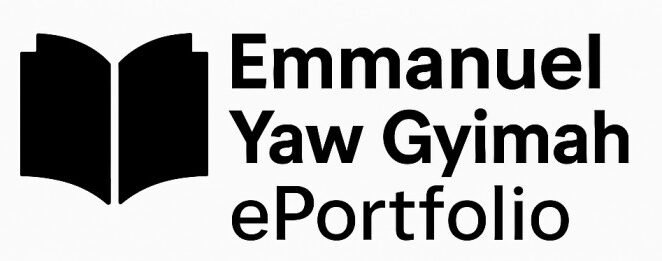Needs Assessment Performance
Practical Technology Integration for Special Education Instruction
- by Emmanuel Gyimah
Project Abstract
For this performance, I conducted a Needs Assessment exploring how multimedia tools—such as interactive simulations, video, and virtual reality—can be effectively integrated into special education classrooms to enhance engagement, comprehension, and social development for students with mild autism. Grounded in the cognitive theory of multimedia learning, this literature-based analysis identifies best practices, current gaps, and the potential of emerging technologies like AR/VR in fostering inclusive, student-centered environments. The findings aim to guide educators and policymakers in designing multimedia-rich instruction tailored to neurodiverse learners.
Essential Questions Addressed
- How can multimedia be leveraged to improve learning for students with mild autism?
- What are the barriers and needs in integrating technology into special education settings?
- What design principles support inclusive and effective multimedia instruction?
Key Findings
- Multimedia tools enhance student engagement, retention, and social interaction when tailored to learning needs.
- Richard Mayer’s Cognitive Theory of Multimedia Learning and Universal Design for Learning (UDL) principles provide a strong theoretical foundation.
- Teachers need access to training, infrastructure, and culturally relevant digital content.
- VR and AR technologies offer strong potential but require proper planning and support to be sustainable and accessible.
AECT Standards Met
| Standard | Indicator | Application |
| 1.5 | Ethics and inclusion | Advocates accessible and culturally responsive technology for neurodiverse learners |
| 2.1 | Instructional design with UDL | Aligns tools with diverse learning needs and IEP goals |
| 3.2 | Learning environments | Builds engaging, tech-supported, personalized spaces |
| 4.3 | Data-informed improvement | Uses research synthesis to guide instructional strategy |
| 5.1 | Research-informed practice | Grounded in multimedia theory and peer-reviewed studies |
| 5.3 | Evaluating design impact | Considers academic, behavioral, and emotional outcomes |
Educator Reflection
This project has deepened my understanding of the connection between technology, accessibility, and learner empowerment. It reinforced that meaningful inclusion requires not just the presence of digital tools, but the intentional design of systems that adapt to every learner. As a special educator and designer, I am more committed than ever to ensuring that the technologies we use are not just functional—but transformational.
